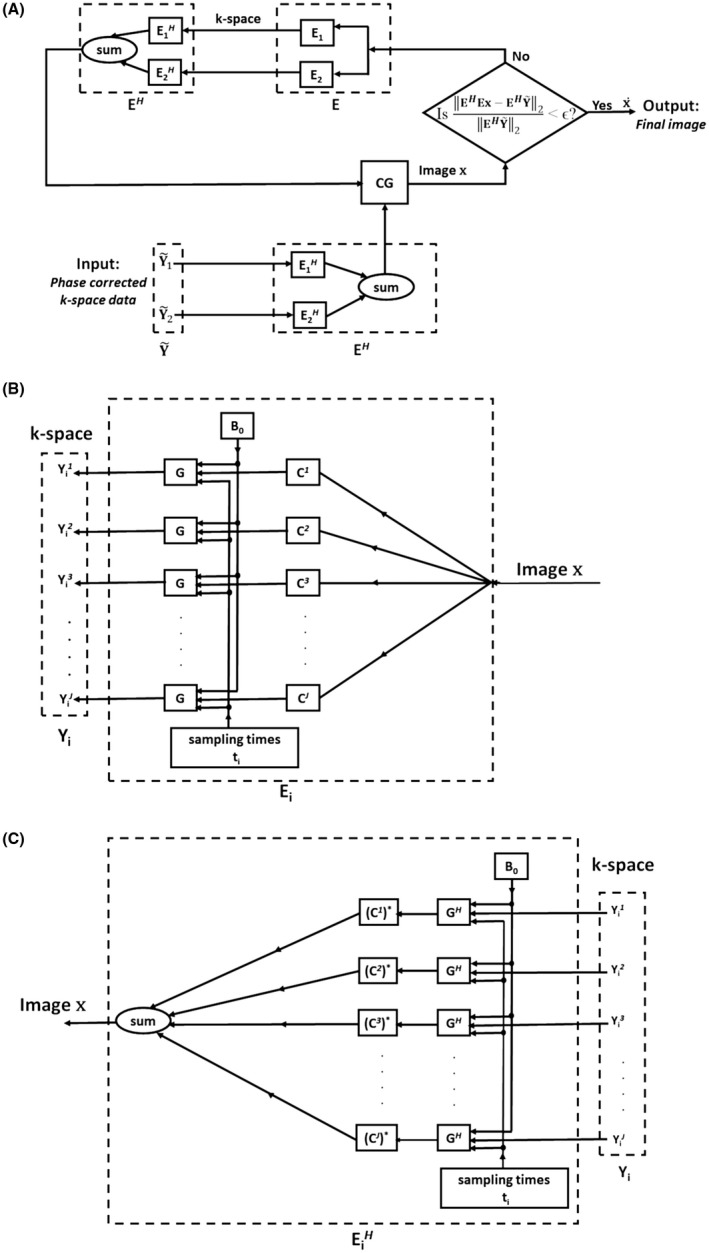Figure 1.

Implementation of iterative model‐based reconstruction (step 3 of proposed framework) using data from both blip‐up and blip‐down EPI scans. (a) Given the input k‐space data that have been phase corrected in step 2, in each iteration of the conjugate gradient (CG) algorithm, we iterate back and forth between the k‐space and image x by encoding operator E = [E 1 E 2 ] T and its adjoint EH that include the center frequency offset corrected B0 field. The convergence is achieved when the residual in the current iteration becomes smaller than ϵ (ϵ being a small number) giving the final distortion corrected output image . (b) Details of the forward encoding operator E i that takes the input single image x to the multicoil output k‐space Y i for phase‐encoding direction i, i = 1 corresponds to the blip‐up and i = 2 corresponds to the blip‐down scans, respectively. The image x is first multiplied by the coil sensitivity C j (j = 1, 2,..,J). This is followed by a modified Fourier transform operator G that maps the product of image and coil sensitivity from image to Fourier space, taking into account the susceptibility effects determined by B0 field and k‐space sampling times ti, resulting in k‐space data (j = 1, 2,..,J). (c) Details of the adjoint encoding operator that takes the multicoil k‐space data (j = 1, 2,..,J) to single image x for phase‐encoding direction i, i = 1 corresponds to the blip‐up and i = 2 corresponds to the blip‐down scans, respectively. Each individual coil k‐space data is transformed to image space by the adjoint of a modified Fourier transform operator (GH). The resulting images are individually multiplied by complex conjugated coil sensitivities (j = 1, 2,..,J) and summed to give the final image x
